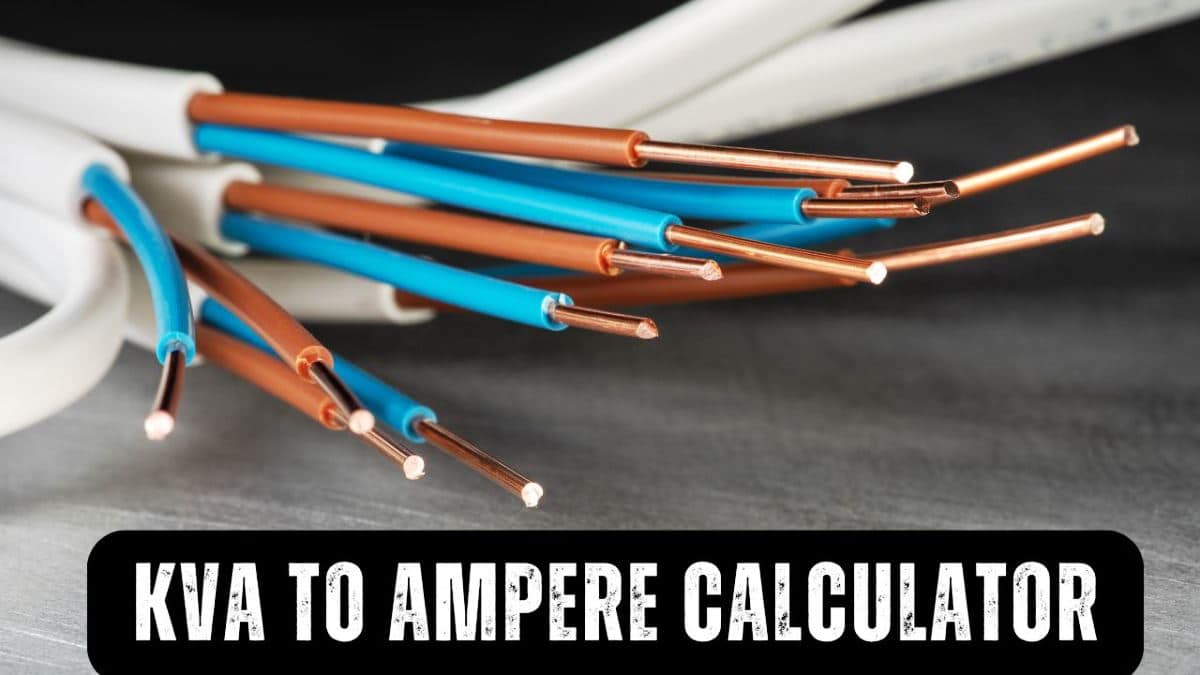kVA to Amps Calculator
Calculate current (Amps) from kVA (Kilovolt-Amperes) for both single-phase and three-phase systems.

Table of Contents
kVA to Amps Conversion
Single Phase kVA to Amps Calculation
For single-phase systems, the current (I) in amperes can be calculated from kilovolt-amperes (kVA) using the following formula:
I(A) = 1000 × S(kVA) / V(V)
Where:
- I(A) Current in Amperes (A)
- S(kVA) Apparent power in Kilovolt-Amperes (kVA)
- V(V) Voltage in Volts (V)
- 1000 Conversion factor from kVA to VA
Key Point: The multiplication by 1000 is necessary to convert kVA to VA before calculating the current.
Three Phase kVA to Amps Calculations
Line-to-Line Voltage Method
For three-phase systems using line-to-line voltage (most industrial applications):
I(A) = 1000 × S(kVA) / (√3 × VL-L(V))
Where:
- I(A) Current in Amperes (A)
- S(kVA) Three-phase apparent power in Kilovolt-Amperes (kVA)
- VL-L Line-to-line voltage (V)
- √3 Square root of 3 (approximately 1.732)
Line-to-Neutral Voltage Method
For three-phase systems using line-to-neutral voltage:
I(A) = 1000 × S(kVA) / (3 × VL-N(V))
Where:
- I(A) Current in Amperes (A)
- S(kVA) Three-phase apparent power in Kilovolt-Amperes (kVA)
- VL-N Line-to-neutral voltage (V)
Practical Examples
Single Phase Example
Given:
- Apparent Power = 5 kVA
- Voltage = 230 V
Calculation:
I(A) = (1000 × 5 kVA) / 230 V = 21.74 AThree Phase Example
Given:
- Apparent Power = 10 kVA
- Line-to-Line Voltage = 400 V
Calculation:
I(A) = (1000 × 10 kVA) / (√3 × 400 V) = 14.43 AImportant Note: Always round calculations to two decimal places for practical applications. In real-world scenarios, consider safety factors and local electrical codes when sizing equipment.
